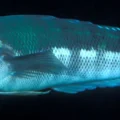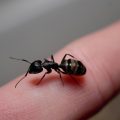Atolla jellyfish, also known as the Coronate medusa or alarm jelly, is a fascinating creature that can be found in the bathypelagic zone of the ocean. This zone is located at depths between 1,000 and 4,000 meters and is also known as the “midnight zone” because no sunlight can penetrate this deep into the ocean. The Atolla jellyfish is one of the most common species found in this zone.
The Atolla jellyfish can range in size from one to eight inches in diameter and can have tentacles that are up to 12 feet long. This species of jellyfish is bioluminescent, meaning it can produce its light. When threatened, it will launch a series of flashes that can draw predators away from itself.
One of the most interesting features of the Atolla jellyfish is its long trailing tentacle. This tentacle is believed to be used for prey capture. When the jellyfish detects prey, it can extend its tentacle and use it to capture its prey. This tentacle can also be used to defend against predators.
The Atolla jellyfish is also known for its unique defense mechanism. When attacked, it will launch a series of bright flashes that can attract predators to the attacker rather than itself. This has earned the jellyfish the nickname “alarm jelly” because it can alert other animals in the area to potential danger.
Despite its unique features, not much is known about the Atolla jellyfish. Scientists are still studying this creature to learn more about its behavior and its role in the deep ocean ecosystem. However, it’s clear that this jellyfish is an important part of the ocean’s biodiversity and plays a crucial role in maintaining the delicate balance of this ecosystem.
The Atolla jellyfish is a fascinating creature that can be found in the deep ocean. Its unique features, including its long trailing tentacle and its bright flashes, make it an important part of the ocean’s biodiversity. While there is still much to learn about this creature, it’s clear that it plays a crucial role in the deep ocean ecosystem.

Distribution of Atolla Jellyfish
Atolla jellyfish, also known as the “alarm jelly” or Coronate medusa, are primarily found in the bathypelagic zone of the ocean. This zone is located at depths ranging from 1,000 – 4,000 meters below the ocean’s surface. The bathypelagic zone is commonly referred to as the “midnight zone” as it is a perpetually dark region where no sunlight penetrates. Atolla jellyfish are well adapted to living in this zone and thrive in the low light and high-pressure conditions found there.
Average Size of an Atolla Jellyfish
The Atolla jellyfish, also known as crown jellyfish, coronate medusa, or alarm jelly, can vary in size depending on the species. However, the most common Atolla species, Atolla sp., typically has a diameter ranging from one to eight inches. The length of the Atolla jellyfish, including its tentacles, can range from 1.5 inches to 12 feet long.
The Role of Atolla Jellyfish in the Ocean Ecosystem
Atolla jellyfish, scientifically known as Atolla wyvillei, have several unique characteristics and behaviors. They are bioluminescent, meaning that they can produce their own light. When attacked by predators, they launch a series of flashes, which serves as a defense mechanism and is believed to draw predators away from themselves. This earned them the nickname “alarm jellyfish”.
Moreover, Atolla jellyfish have long trailing tentacles that facilitate prey capture. They use these tentacles to catch small marine organisms, which serve as their primary food source. These tentacles are equipped with specialized cells called nematocysts, which contain venomous toxins that are capable of paralyzing their prey.
Atolla jellyfish are bioluminescent, have long trailing tentacles, and use a series of flashes as a defense mechanism to avoid being eaten by predators.
Conclusion
The Atolla jellyfish is a fascinating creature that lives in the mysterious depths of the ocean. Its unique bioluminescent feature serves as a defense mechanism against predators, earning it the nickname “alarm jellyfish”. With a diameter ranging from one to eight inches and tentacles reaching up to 12 feet long, this jellyfish is an important part of the marine ecosystem. Although not much is known about the Atolla jellyfish, its presence in the bathypelagic zone reminds us of the vastness and complexity of our oceans, and the importance of understanding and protecting them.












